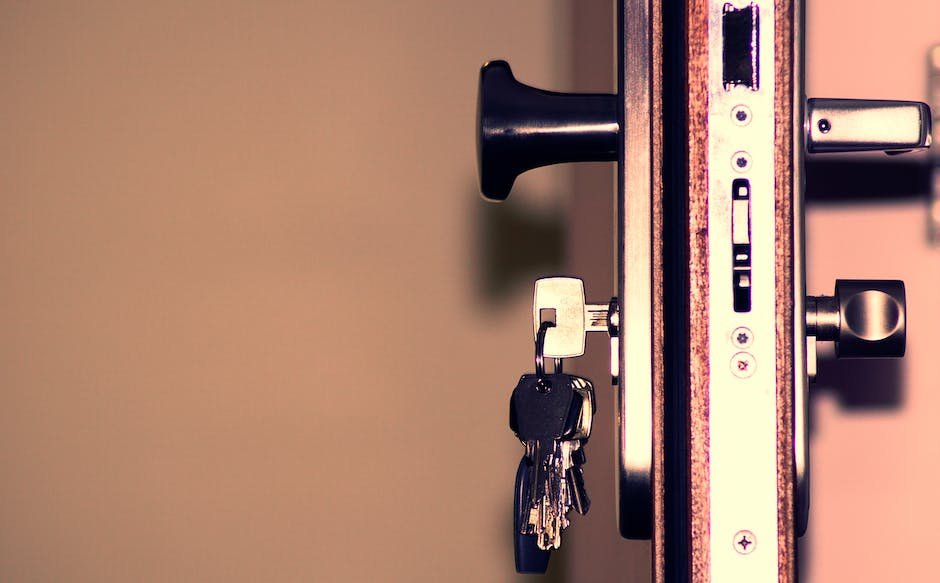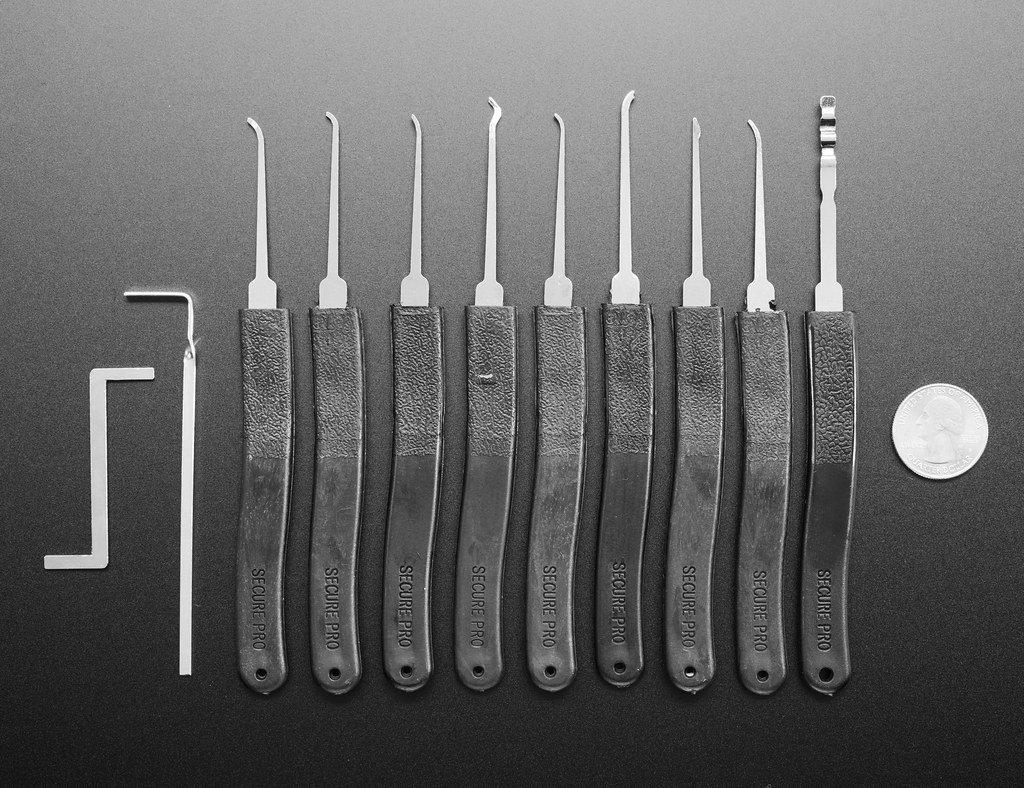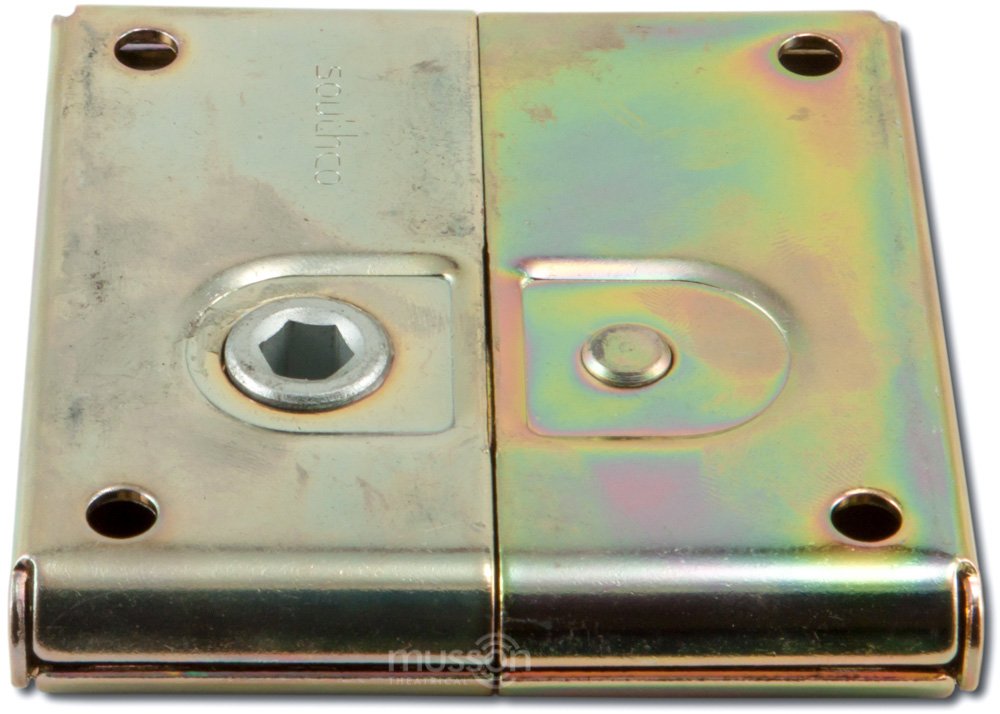Unlocking the secrets of intricate mechanisms, Locksport enthusiasts embark on an exhilarating journey that blurs the line between skill and artistry. From the seemingly impenetrable fortress-like padlocks to the perplexing puzzles of combination locks, the world of Locksport presents a diverse range of challenges that captivate the minds of those eager to conquer them. In this comprehensive guide, we delve into the realm of Locksport challenges, exploring how different types of locks can test the mettle of even the most formidable tinkers. So, grab your toolkit and brace yourself for an enthralling expedition through the labyrinthine world of Locksport.
Table of Contents
- Understanding the Basics: Different Types of Locks and Their Mechanisms
- Mastering the Fundamentals: Beginners’ Tips and Techniques in Locksport
- Exploring Advanced Challenges: Complex Locking Systems and Escalating Difficulty
- Unlocking the Secrets: Techniques and Equipment for Overcoming Specialized Locks
- Adapting to Real-World Scenarios: Overcoming Common Challenges in Locksport
- Q&A
- In Summary

Understanding the Basics: Different Types of Locks and Their Mechanisms
Different Types of Locks
Locks play an essential role in securing our valuables and providing peace of mind. Understanding the basics of different types of locks and their mechanisms can help us make informed decisions when it comes to protecting our belongings. Here are a few common types of locks:
- Pin Tumbler Locks: One of the most widely used locks, pin tumbler locks consist of a set of pins that prevent the lock from turning without the correct key. The key’s grooves align the pins at the correct heights, allowing the lock to rotate.
- Deadbolt Locks: Deadbolt locks are known for their strength and reliability. They don’t contain springs and use a solid metal cylinder that extends into the door frame, providing an extra layer of security.
- Padlocks: Padlocks are portable locks that can be used on a variety of objects. They typically consist of a shackle and a body, and they can be opened with a key or a combination. Their versatility makes them a popular choice for securing gates, lockers, and storage units.
Understanding the mechanisms behind these locks helps us appreciate their complexity and effectiveness. By familiarizing ourselves with the various types of locks available, we can choose the most suitable option for our specific needs. Whether it’s safeguarding our homes, businesses, or personal belongings, a well-chosen lock can provide invaluable protection.
Mastering the Fundamentals: Beginners’ Tips and Techniques in Locksport
Locksport is an exciting hobby that welcomes beginners with open arms. Whether you’re curious about the art of picking locks or eager to challenge yourself with new techniques, mastering the fundamentals is vital. Here are some indispensable tips and techniques to help you embark on this thrilling locksmith journey:
– **Understanding Lock Anatomy**: Start by familiarizing yourself with the different parts of a lock. From the body to the pins, springs, and keyway, each component plays a crucial role in the lock’s functionality. Take time to observe and identify the various parts, their functions, and how they interact with one another.
– **Selecting the Right Tools**: A locksmith’s kit is incomplete without the necessary tools. Begin with obtaining a tension wrench and a variety of lock picks, such as hooks, diamonds, and rakes. Experiment with different shapes and sizes to find what works best for you. Remember, quality tools can significantly enhance your skills and overall experience.
– **Developing Sensitivity and Technique**: Patience and finesse are key in locksport. Practice applying gentle tension on the tension wrench while delicately manipulating the lock’s pins. Pay close attention to the subtle feedback you receive through your fingertips. As you become more experienced, you’ll develop a sense of the lock’s inner workings, making it easier to apply the correct amount of tension and manipulate the pins accordingly.
Remember, becoming a proficient lockpicker takes dedication and practice. Enjoy the journey, expand your knowledge, and always foster a mindset of ethical responsibility. With perseverance, soon you’ll be unlocking new doors and exploring the intricate world of locksport.
Exploring Advanced Challenges: Complex Locking Systems and Escalating Difficulty
Unlocking doors and cracking locks have always intrigued human curiosity. As the world evolves, so do lock mechanisms, becoming increasingly complex and sophisticated. This evolution has given rise to a new breed of challenges for lock enthusiasts and professionals in the realm of security.
To truly understand the intricacies of complex locking systems, one must delve into the various mechanisms and technologies that make them formidable. From electronic locks that utilize biometrics and programmable codes to physical locks with precision engineering, the diversity of these systems is staggering. Each type presents its own unique set of challenges; identifying and overcoming these hurdles requires immense expertise and resourcefulness.
Escalating difficulty is a natural consequence of advancing lock technology. For those seeking thrill and adventure, tackling these intricate puzzles offers an unparalleled satisfaction. Adventurers and escape room enthusiasts are now exposed to an array of mind-bending locks, including combination locks, electronic keypad locks, magnetic locks, and even cutting-edge fingerprint or retina scanners.
With every lock comes a new level of difficulty, designed to push the boundaries of human problem-solving abilities. The evolution of complex locking systems has revolutionized not only the realm of security but also the realm of entertainment, making it a captivating challenge for those eager to put their skills to the test. Whether you’re a locksmith, an escape room enthusiast, or simply someone fascinated by the art of lockpicking, exploring these advanced challenges is a journey worth undertaking.
Unlocking the Secrets: Techniques and Equipment for Overcoming Specialized Locks
When faced with specialized locks that seem impossible to crack, fear not! This section will provide you with valuable insights into the techniques and equipment needed to unlock even the most intricate locks. Whether you’re a locksmith looking to expand your skills or simply an enthusiast interested in the art of lockpicking, this is your ultimate guide.
Techniques:
- Lockpicking: The classic art of lockpicking involves using specialized tools to manipulate the lock’s pins and tumblers to open it without the original key. With practice and patience, you can become a skilled lockpicker and master the art of finesse.
- Bumping: Bumping is a technique that utilizes a specially crafted bump key to manipulate pins within the lock, causing them to jump and the lock to open. With the right technique and a well-cut bump key, you can open some locks within seconds.
- Impressioning: A more advanced technique, impressioning involves making a copy of the key by creating impressions on a blank key using a file or a specialized tool. With careful precision, you can gradually shape the blank key until it perfectly matches the lock’s inner workings.
Equipment:
- Tension Wrench: This essential tool applies rotational pressure to the lock’s plug while you pick the pins, allowing you to manipulate them and unlock the device.
- Pick Set: A variety of picks with different profiles and shapes are necessary to manipulate the individual pins within the lock. From hooks to rakes, having a diverse set ensures you have the right tool for any lock challenge.
- Bump Key: Crafted specifically for bumping, these keys have unique grooves that align with the pin positions in a lock. When struck with a bump hammer, the pins momentarily jump, allowing the lock to open.
- Impressioning Tools: To master the art of impressioning, you’ll need tools such as files, key blanks, and a vice to carefully carve and shape the key until it matches the lock’s inner workings.
Remember, the techniques and equipment mentioned here should only be used for legal purposes, such as professional locksmithing or personal interest. Always abide by the laws and ethical guidelines of your region.
Adapting to Real-World Scenarios: Overcoming Common Challenges in Locksport
Locksport is a fascinating field that allows enthusiasts to explore the art of lock picking and security systems. However, like any discipline, it comes with its own set of challenges. In order to become proficient in locksport, one must first understand and adapt to real-world scenarios that may arise. Here are some common challenges that lockpickers often face, along with strategies for overcoming them:
1. Restricted Keyways: Some locks have keyways that are designed to prevent easy access for lockpickers. These can include paracentric keyways or high-security locks. To overcome this challenge, lockpickers can invest in specialized tools designed for these types of keyways. Additionally, they can practice advanced techniques such as bumping or raking to gain access.
2. Pinning Variations: Lock manufacturers often introduce variations in pinning patterns to increase security. This can include serrated or spool pins that make picking more difficult. Lockpickers can overcome this challenge by studying and mastering the techniques required to deal with different pinning variations. This may involve adjusting their approach or using specific tools designed for these types of pins.
3. Time Constraints: Real-world scenarios often impose time constraints when it comes to lock picking. Whether it’s an emergency situation or a timed challenge, lockpickers must learn to work efficiently under pressure. Practicing timed drills and developing a strong sense of touch and feedback can help lockpickers overcome this challenge.
4. Legal and Ethical Considerations: Engaging in lock picking without proper authorization can have legal consequences. It’s crucial for lockpickers to understand and respect legal boundaries, only practicing their skills on locks they own or have explicit permission to bypass. Ethical considerations also come into play when it comes to using lock picking skills for non-destructive purposes, such as locksmithing or forensics.
By acknowledging and addressing these common challenges, lockpickers can enhance their skills and become better equipped to tackle real-world scenarios. Remember, locksport is not just about picking locks, but also about developing a deep understanding of security systems and the ability to adapt to ever-evolving challenges.
Q&A
Q: What is locksport and why is it gaining popularity?
A: Locksport is a recreational activity focused on picking locks as a hobby. It appeals to many due to the intriguing challenge it presents and the satisfaction of mastering a skill that was once considered exclusive to locksmiths.
Q: Are all locks equally challenging for lockpickers?
A: No, different types of locks pose varying challenges. Some, like simple padlocks, are relatively easy to pick, while more advanced locks, such as high-security deadbolts, require exceptional skills and more advanced techniques.
Q: What are the challenges associated with padlocks?
A: Padlocks are usually the entry point for beginners in locksport. Despite their simplicity, they provide a great starting point for learning the basic concepts of lockpicking, such as tensioning and utilizing basic picking tools.
Q: Can you discuss the challenges presented by combination locks?
A: Combination locks rely on precise alignment of internal components to function properly. However, picking them is a different story altogether. It requires a strong knowledge of lock mechanics and manipulation techniques to successfully decipher the combination.
Q: What challenges do cylinder locks pose for lockpickers?
A: Cylinder locks are commonly found in residential and commercial settings. They offer a greater level of complexity compared to padlocks, requiring more advanced skills like single pin picking or the use of bump keys.
Q: How difficult are electronic locks to pick?
A: Electronic locks present a unique set of challenges. While traditional lockpicking techniques may not work, some skilled lockpickers have managed to exploit vulnerabilities in these locks’ circuitry or bypass them altogether, requiring a deep understanding of electronics and programming.
Q: Are high-security locks truly impregnable?
A: While high-security locks are designed to pose significant challenges to lockpickers, no lock is entirely impregnable. Experienced lockpickers constantly push the boundaries, finding new vulnerabilities and techniques to overcome even the most robust security measures.
Q: What ethical considerations should be taken into account when practicing locksport?
A: Practicing locksport should always be within the boundaries of legality and ethics. It is crucial to only pick locks you own or have explicit permission to pick. The intention should be to improve security and raise awareness rather than engage in illegal activities or cause harm.
In Summary
And there you have it – a comprehensive guide to locksmith challenges for different types of locks! We have explored the fascinating world of locksport, delving into various lock mechanisms and the techniques required to overcome them. Whether you are an avid locksmith enthusiast or just curious about the intricate world of locks, we hope this guide has served as a valuable resource.
From the humble pin-tumbler locks to the more complex wafer locks, we have covered the challenges and solutions for each type, unraveling the secrets behind their defense mechanisms. Locksport is a unique art that combines dexterity, patience, and problem-solving skills, offering enthusiasts an exciting platform to test their abilities.
Remember, locksmith challenges should always be approached ethically and responsibly. Respect the boundaries of legal locksmithing and engage solely in locksmith activities where lawful permission has been granted. The goal is to promote skills, curiosity, and a deeper understanding of lock mechanisms – not to encourage unlawful behavior.
As you continue to develop your locksmith skills, we encourage you to join local locksport communities or participate in lockpicking competitions. These avenues allow you to connect with like-minded individuals who share your passion for this captivating craft.
Whether you are interested in the classic challenge of picking simple padlocks or eager to tackle the more intricate high-security cylinders, locksmithing challenges offer a plethora of opportunities for learning and personal growth. Remember, it is through practice, dedication, and a thirst for knowledge that one becomes a true master of locks.
So, go forth, armed with this newfound understanding of locksport challenges for different types of locks. May you embrace the exhilarating world of locksport, unlocking doors (metaphorically and literally) to new levels of fascination and expertise. Keep those tension wrenches and picks at the ready, for the adventures in locksport await!
As an affiliate, my content may feature links to products I personally use and recommend. By taking action, like subscribing or making a purchase, you’ll be supporting my work and fueling my taco cravings at the same time. Win-win, right?
Want to read more? Check out our Affiliate Disclosure page.
